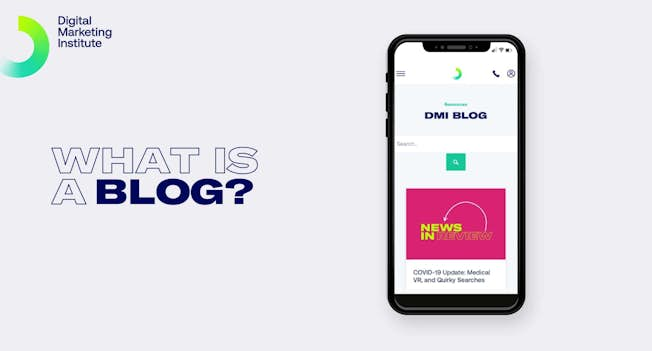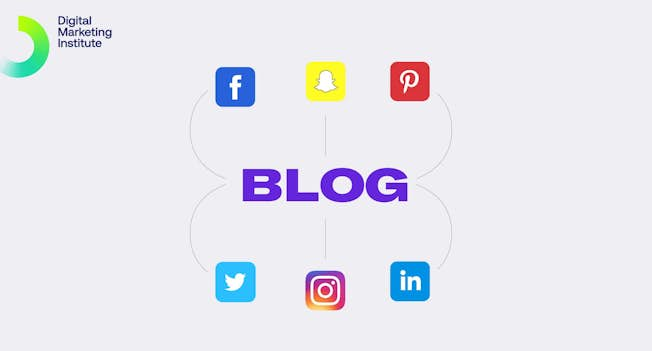So you’d like to write a blog…but you’re not sure where to start or how to get started. Well, the good news is that it’s not very complicated. Read our handy guide and find out how to get blogging today.
What is a blog?
A blog is an online journal or informational website, with the most recent posts appearing at the top of the page. Blogs are often run by people who want to share their views and opinions on particular subjects or topics. Fashion, food, and travel blogs are among the most popular. Blogs can, of course, contain photos and videos, as well as text. Marketers often use blogs, in addition to social platforms like Twitter, to communicate with their market and build rapport. Businesses often incorporate blogs into their main corporate websites and use them to provide information to customers and prospective customers, keep them informed of upcoming events, and update them on the latest happenings.

Why write a blog?
A blog should never be used to aggressively sell or market a product. Instead, its main purpose is to provide value to the reader. You should aim to produce useful, high-quality content that people look forward to reading and want to share. A blog can also help marketers to:
- Establish authority in the marketplace
- Build a trusting relationship with customers
- Build awareness of their brand, product, or service
- Drive traffic to their main website
- Attract potential customers
Do I have time to blog?
Before you get started, it’s important to recognize that blogging takes effort. To blog successfully, you need to devote time to a number of ongoing tasks, including:
- Researching, writing, and editing your blog
- Sourcing images and videos
- Posting on a regular basis
- Replying to reader comments or questions about your posts
- Promoting your blog on social platforms
- Connecting and interacting with other bloggers, and joining blogging communities
- Offering other bloggers guest posts on your blog
- Sharing other bloggers’ content on your own social networks
So before you start a blog, make sure you’re up for the challenge of maintaining one – and that you have the time, commitment, and energy needed to devote to the task.
How do I start blogging?
You can get started with your blog by following these steps:
- Step 1: Choose the subject you’d like to blog about. Don’t think too broadly here – it’s best to focus on a niche or a specialty, rather than a very wide topic. Also, it’s a good idea to blog about something you are passionate about or that excites you. Hopefully, your enthusiasm will shine through in your content.
- Step 2: Choose a domain name. This is essentially the title for your blog, so make it something that’s easy to remember and easy to spell. It’s always a good idea to include a keyword in the domain name if you can. And try to use a domain name that ends in ‘dot com’ if possible. You can purchase a domain name from several sites, including NameCheap and GoDaddy.
- Step 3: Choose a blogging platform. There are a variety of different blogging platforms you can use to create your blog, some of which are free. Free platforms, such as WordPress.com, are a great choice for beginners. However, if you choose a free platform, ads will be run on your site and you never actually have full ownership of it. On the positive side, you won’t have to purchase a domain name or hosting. For a business, choosing a paid platform in which you host your own blog is recommended: WordPress.org is one of the most popular. Other platforms to consider include Squarespace, Wix, and Joomla.
- Step 4: Choose your blog host and theme. A blog host is a company that provides space on its servers, for a fee, to store your blog. There are many to choose from. When choosing a host, as well as considering cost, consider whether it offers a reliable service and enough server space. When you have chosen a host, you can put your blog up online and install a theme. A theme is a template that can enhance the look and feel of your blog. You can access a free theme or purchase one. You can also install plugins to improve functionality.
- Step 5: Create your content. The final step is to create your content. Remember, the more you blog, the better you will get at it. So now it’s time to start writing.
11 tips for writing an effective blog
Here are some tips you can use to write well crafted, interesting, and engaging blog posts:
- Create an outline before you begin, to help plan what you’re going to say in your blog post.
- Include an introduction, main body, and conclusion. Introduce your topic and set the scene in the introduction. State your main points in the body. And summarize your argument in the conclusion.
- Use a conversational, informal tone. Imagine you are having a friendly chat with the reader. Avoid jargon, clichés, and overly technical language.
- Address the reader directly. Use words like “you”, “we”, and “I”.
- Use contractions. Use “I’m” instead of “I am” and “don’t” instead of “do not”.
- Include a catchy headline that generates curiosity or an emotional response in the reader. Headlines that pose a question can be particularly effective, for example: “Would you like to double your turnover in a week?” Whenever possible, incorporate a keyword into your headline to increase SEO. As a rule of thumb, aim to limit your headline to eight words or less.
- Use subheadings and lists to break up your content. These are easy for readers to scan. Subheadings, in particular, can act as signposts to guide readers through your blog. Subheadings should usually be in Header 2 format.
- Incorporate images and videos, if possible. Videos are very popular with readers and increase user engagement. Consider summarizing your main points in a video, and then expanding on them in the written content.
- Include a call-to-action at the end of your blog. This could be a link to connect with your company on social media, or to tweet about your blog. Also include links to other people’s sites, and hashtags.
- Invite readers to comment about your blog, ask a question, or share their views. Then be sure to respond to them.
- Edit your content carefully, before it is published. Ensure there are no typos or grammatical errors, and that the content is structured appropriately.
How frequently should I blog?
The short answer to this question is: as often as possible! However, you should always focus on quality over quantity.
The most effective blogs tend to be 1,500-plus words and do a ‘deep dive’ into a subject. Aim to cover topics in as much depth as you can, so the blog really offers value to readers.
Remember, it’s better to produce one top-notch, well-researched blog piece fortnightly or even monthly, rather than several short blogs every week that are of inferior quality. If your blog doesn’t help your reader in some way, it will be instantly forgotten and is unlikely to be shared.
What are good topics to blog about?
When it comes to topics to blog about, the list is endless. When choosing a topic, try to think of one that:
- Provides useful information
- Demonstrates a unique angle
- Shows you care about your readers
Good topics for a blog include:
- A success story you’d like to share
- Answering a customer question in detail
- Explaining how someone used your product or service in a humorous way
- A case study related to your industry
- An interview with an expert in your industry
How should I promote my blog?
At the end of the day, you want your blog to be read by as many people as possible. The best way of achieving this is to create high quality, original content on a consistent basis that readers look forward to reading, find extremely useful – and are keen to share.
- To ensure your blog reaches the widest possible audience:
- Promote your blog on your social media platforms
- Include your blog link in your social media profiles
- Share your blog posts as soon as you publish them
- Share your posts on networks that you know your audience uses
- Share new blog posts more than once
- Review your older posts, update them if necessary, and share the best ones again
- Include links to your blog in your email signature
- Apply to have your blog content present on social bookmarking sites
- Invite other bloggers to guest post on your site, and vice versa
Promoting your blog should never be an after-thought. After all, it’s important that you get the best return from all the time you spend creating your content. So promote it far and wide – and on a continuous basis. That way, you’ve got the best chance of reaching the widest possible audience, increasing traffic to your site, and attracting potential new customers.
Now you’ve got all the basic tips and tricks you need to start blogging. So why wait until tomorrow? Get off the sideline, jump right in, and give blogging a try today!

Related
- Categories:
- Articles
- Content Marketing
Upgrade to Power Membership to continue
your access to thousands of articles, toolkits, podcasts, lessons and much much more.
Become a Power Member- Login
- View Courses
- - - -
- Courses
- Resources
- - - -
- My Account
- Change Password
- Logout




